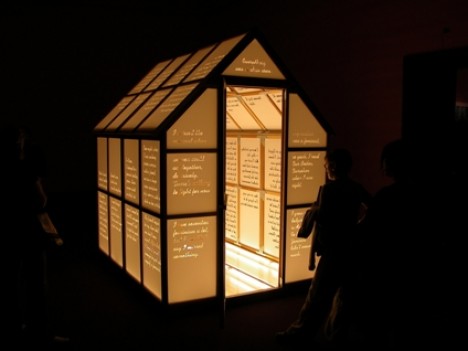Manovich is a technological determinist
- believes the technology that we produce determines our culture -responsible for collapse of disciplines
- software-centric not like others who focus on hardware and machinery.
Soft Evolution
- software = media - turning algorithms over data
- Hybrid media vs multimedia
.
.
.
multimedia juxtaposition everything, kept separate , interfaces sectioned off
hybrid media intermingling/integration - aesthetic of work - to do with combinatory approach
-Software simulates the media and the techniques for its manipulation
- data structures (simularity) - enables a kind of hybridity e.g. zoom out applied to a book
-Array - sound/video/text
.
.
'softwarisation' all hardware techniques are moved in to software 'plug ins' (plug ins allow new algorithms to be applied) define new ways of manipulating data - many physical mediums can be combined in to one kind of data structure - different tools have different 'biases' but they also support opposing data types
-bitmap - vector - photoshop -illustrator
- the idea of disciplines ignores the common features of all media and cultural production being done today which are the result of their reliance on the same technology. A small number of basic data structures (or formats) which are the foundation of all modern media software.*** - algorithms 'operate' on these structures - e.e. cut/copy/paste - some are 'native' to particular types - blur and bitmap, media specific commands - these produce very different aesthetic styles.
- The implementation of media - independent techniques are structurally similar to various aesthetic systems in art that were not limited to a a particular medium: for instance, baroque, neo-classicism, constructivism, post-modernism, remix as well as vernacular aesthetics and professional/commercial aesthetics. Each system manifested itself across media. Thus, baroque aesthetics can be found in architecture, sculpture, painting and music, constructivism was applied to product design, graphic design, clothing, theater and film.
*** parametric design - specify diversity in how something appears
the idea of this comes from software manipulation according to Manovich. Styles influenced by architecture, examples being the work of Zaha Hadid.

Wittenstein - 'family resemblance'
is parametric universal design? modernism?
Is computer 'meta-medium' - overarching
or ' collection of simulated ....'
or 'mono-medium'
Think in terms of ecosystems of bitmap, vector, etc. After Effects as ecosystem.
Media Design (software in action)
- "We shape our tools and there after our tools shape us" - Marshall McLuhan, (1964)
Languages of design, cinematography, painting, animations, typography, all meet within the computer. After Effects was introduced in 1993 at center of this transformation. After Effects characterised by 'deep remixability'
- visual, spatial, temporal - diversity of new forms
- all of history open for pilfering but through vernacular means - vimeo, youtube
- 1960 -'Motion Graphics' term coined in company name (John Whitney)
:
:
focus on animated typography and type/abstract image integration .
-Evolution comparative to Velvet Revolution; not a big bomb going off but an insidious, underground effect.
:
:
result of Velvet Revolution is a new hybrid of visual language of moving images in general. This language is not confined to particular media forms. Present in both narrative and figurative sequences and films.
-move away from realism ( contra to early CGI) move from time based to composition based.










































